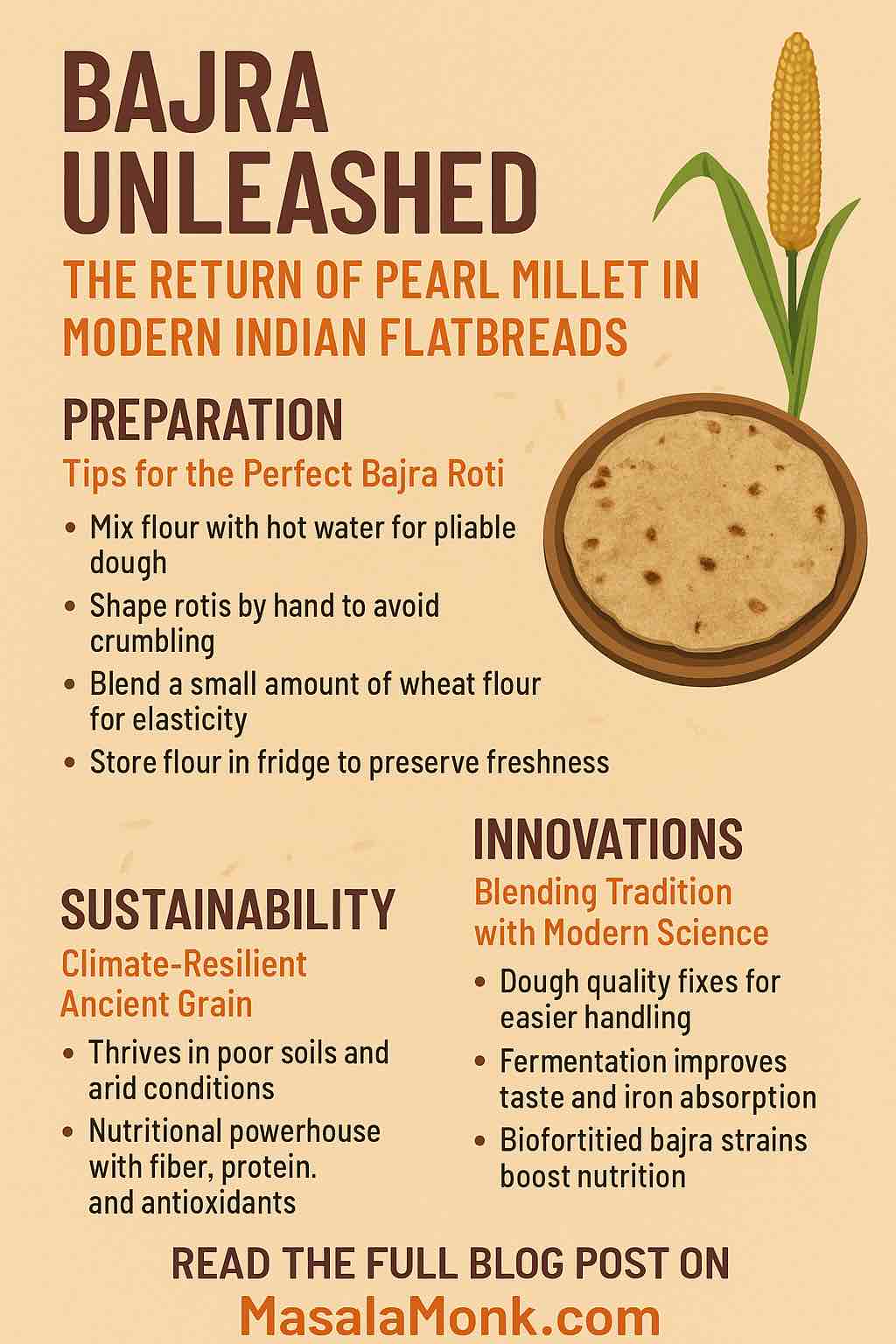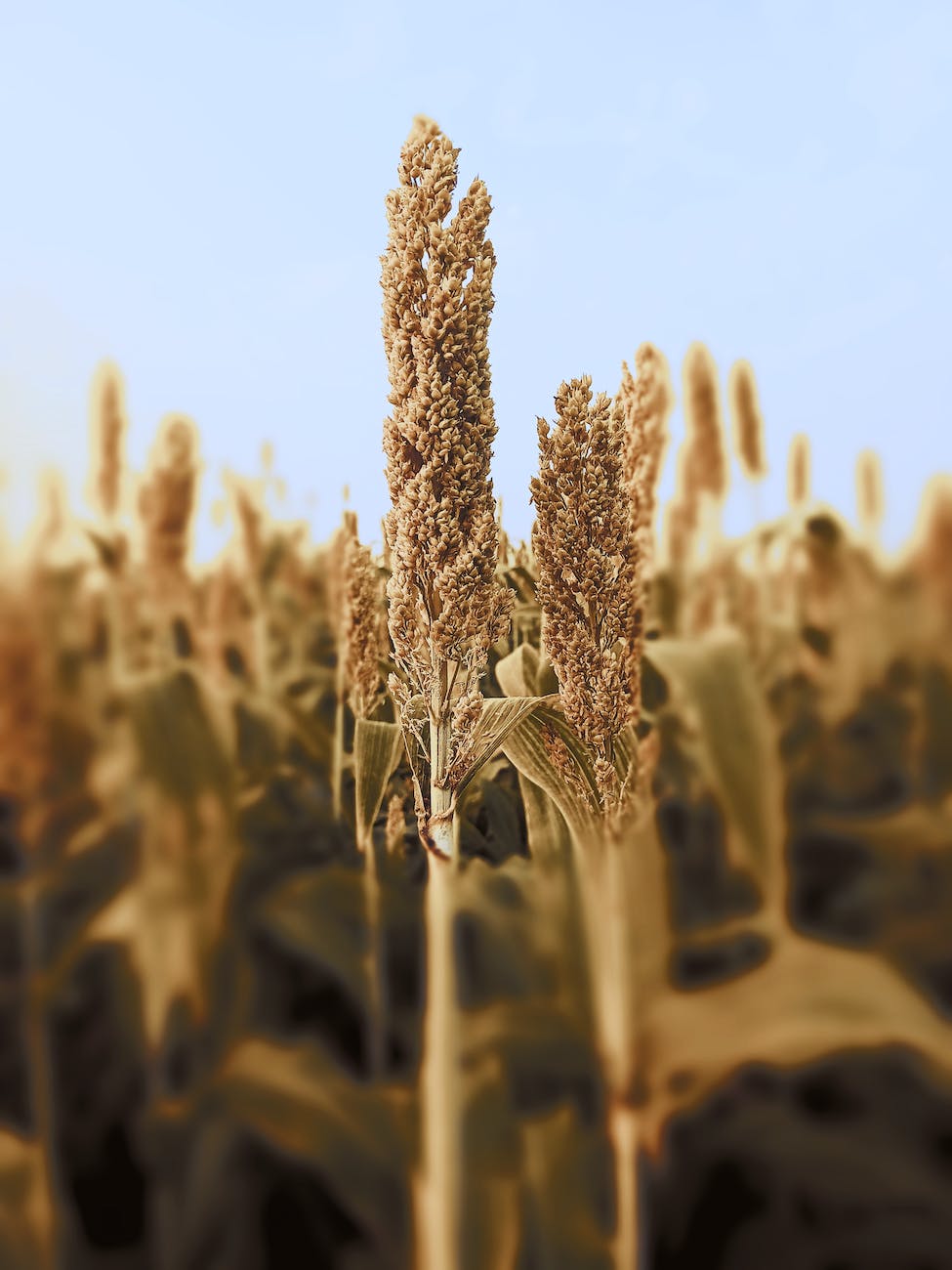
In a world that is waking up to the benefits of traditional grains, Bajra, or Pearl Millet, is making a triumphant return. Once a staple of rural Indian households, bajra is now taking center stage in urban kitchens, health-conscious cafes, and gluten-free bakeries. This blog post explores the deep cultural roots, nutritional benefits, modern processing innovations, and practical ways to incorporate bajra into your daily flatbread routine.
What is Bajra?
Bajra (Pennisetum glaucum) is a climate-resilient grain that thrives in arid regions of India, particularly Rajasthan, Gujarat, Haryana, and parts of Maharashtra and Karnataka. It is one of the oldest cultivated grains known to mankind, dating back thousands of years.
Nutritional Snapshot:
- Rich in Protein: ~11g per 100g
- High in Fiber: Supports digestion and gut health
- Packed with Micronutrients: Iron, magnesium, phosphorus, potassium, and zinc
- Low Glycemic Index: Suitable for diabetics
- Gluten-Free: Ideal for people with gluten intolerance or celiac disease
The Traditional Role of Bajra in Indian Flatbreads
For centuries, bajra has been ground into flour to make roti or bhakri—dense, hearty flatbreads served with ghee, jaggery, dal, or green leafy vegetables. These are typically consumed more during winter months, thanks to bajra’s warming properties.
Regional Variations:
- Rajasthan: Bajra roti with garlic chutney and buttermilk
- Gujarat: Bajri na rotla with white butter and jaggery
- Maharashtra: Bajrichi bhakri with pitla and thecha
Modern Innovations Making Bajra Better
1. Fermentation Enhancements
Recent research supports fermenting bajra flour to improve mineral bioavailability and taste. Fermented bajra can replace up to 20% of wheat flour in breads while reducing anti-nutrients like phytic acid.
2. Improved Dough Handling
Techniques like blending with small quantities of wheat flour or using warm water and oil help overcome the grain’s natural lack of gluten, making the dough easier to handle.
3. Shelf-Life and Storage
Innovations like malting, germination, and near-infrared treatment extend the shelf life of bajra flour, reducing rancidity and bitterness, especially important for urban consumers and commercial use.
4. Biofortified Bajra
Iron-rich and zinc-enhanced varieties are being developed to combat nutritional deficiencies. A school-based study showed improved cognitive performance in children consuming iron-biofortified bajra bhakris.
Making the Perfect Bajra Roti: A Practical Guide
Ingredients:
- 1 cup bajra flour
- 1/2 cup warm water (adjust as needed)
- Pinch of salt
- 1 tsp oil or ghee (optional)
Method:
- Mix: In a bowl, combine bajra flour and salt. Gradually add warm water and knead into a soft dough. Add oil for a smoother texture.
- Rest: Let the dough rest for 5-10 minutes.
- Shape: Take a portion of dough and flatten it by hand or use a plastic sheet to help shape it. Rolling pins tend to break bajra dough.
- Cook: Place on a hot griddle (tava) and cook on both sides until small brown spots appear. Optionally, cook directly over flame for a smoky flavor.
- Serve Hot: Brush with ghee and serve immediately with your favorite curry or chutney.
Pro Tips:
- Add sesame seeds or finely chopped spinach to enhance flavor and nutrition.
- For a softer roti, mix in 1-2 tbsp of mashed potato or grated purple yam.
Incorporating Bajra into Your Diet
Beyond flatbreads, bajra can be used in:
- Porridge: Sweet or savory with lentils and vegetables
- Laddoos: Mixed with jaggery and ghee
- Khichdi: Combined with moong dal for a hearty one-pot meal
- Cookies & Crackers: Using bajra flour as a gluten-free base
The Bigger Picture: Sustainability and Health
Choosing bajra isn’t just about personal health—it’s also about supporting sustainable agriculture. Bajra requires minimal water, thrives in harsh climates, and supports local farmers. With rising climate concerns and growing nutritional awareness, bajra is more relevant than ever.
Conclusion: Tradition Meets Innovation
Bajra is more than just an ancient grain. It is a symbol of India’s culinary heritage, a beacon of health, and a resilient crop fit for the future. By reviving its use in flatbreads—enhanced by modern science—we not only honor tradition but also empower ourselves with nutrition, sustainability, and flavor.
So the next time you think of roti, give bajra a chance to surprise you.
Have a favorite bajra recipe or tip? Share it in the comments below! Let’s bring this humble millet back to our plates and hearts.
✅ 10 Reader FAQs on Bajra Flatbreads
1. What is the difference between bajra roti and wheat roti?
Bajra roti is gluten-free, denser, and has a slightly coarse texture compared to soft, stretchy wheat roti. It’s richer in fiber and minerals, making it more filling and diabetic-friendly.
2. Can bajra roti be eaten every day?
Yes, especially during winter. However, balance it with other grains like wheat or jowar for dietary variety and optimal digestion.
3. How do I make bajra dough easier to roll and handle?
Use warm water, add a teaspoon of oil, and rest the dough. Optionally, blend with a small amount of wheat or rice flour for better pliability.
4. Is bajra suitable for people with diabetes?
Absolutely. Bajra has a low glycemic index and high fiber content, which helps regulate blood sugar levels and keeps you fuller for longer.
5. Why does bajra flour go bitter or smell off quickly?
It has a high fat content and is prone to rancidity. Store it in an airtight container in the fridge or freezer to extend shelf life.
6. Can I use bajra flour in baking (e.g., bread or cookies)?
Yes! Bajra works well in gluten-free cookies, crackers, and even partially in bread. Use binding agents like xanthan gum or eggs for structure.
7. What are the health benefits of eating bajra regularly?
Bajra supports heart health, lowers cholesterol, improves digestion, strengthens bones, and boosts iron levels—especially when biofortified varieties are used.
8. How does fermentation help bajra flour?
Fermentation improves flavor and increases mineral absorption by reducing anti-nutrients like phytic acid. It also softens the dough.
9. What dishes can I make other than bajra roti?
Try bajra porridge, khichdi, laddoos, puris, millet upma, or even dosa-style crepes with a bajra base.
10. Is bajra flour safe for toddlers and elderly people?
Yes, in moderation. For toddlers, mix it with other flours or serve as porridge. For elderly, pair with ghee or curd for easier digestion.










